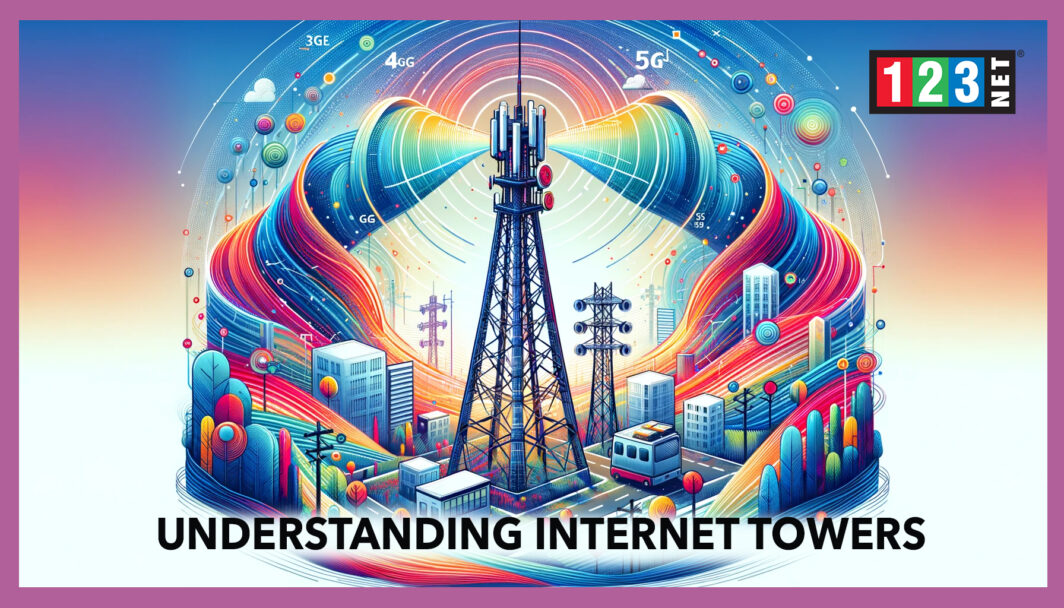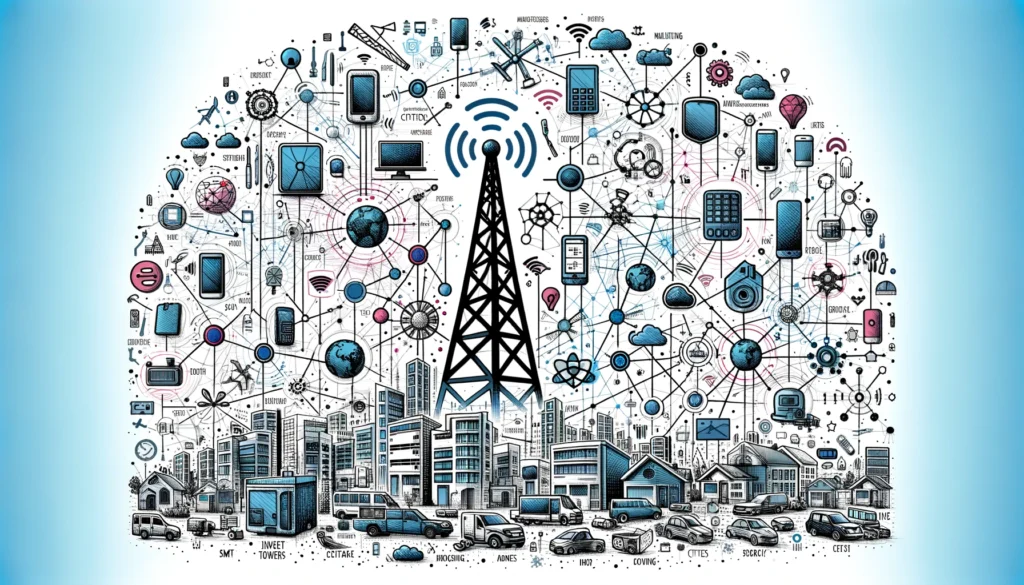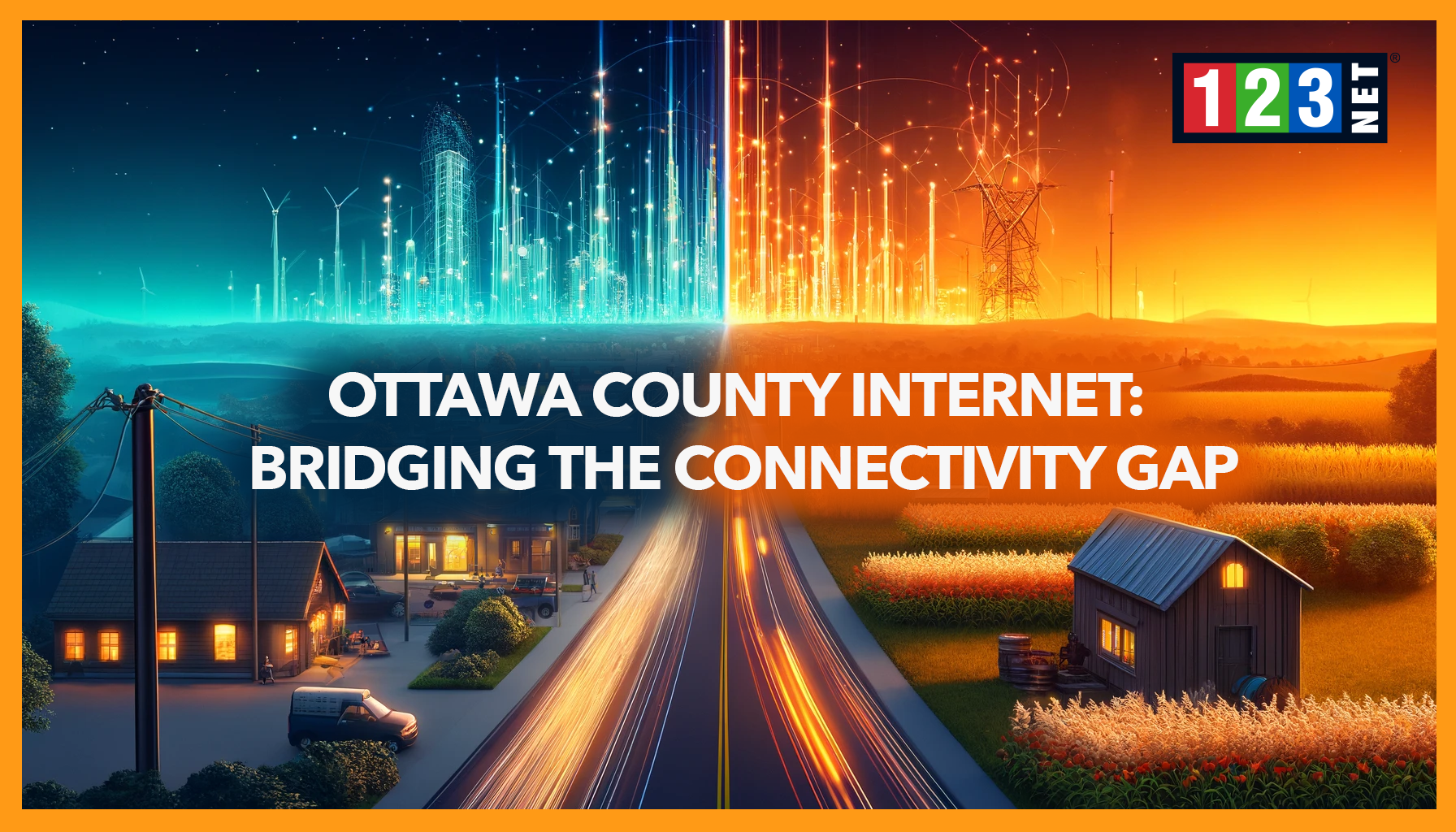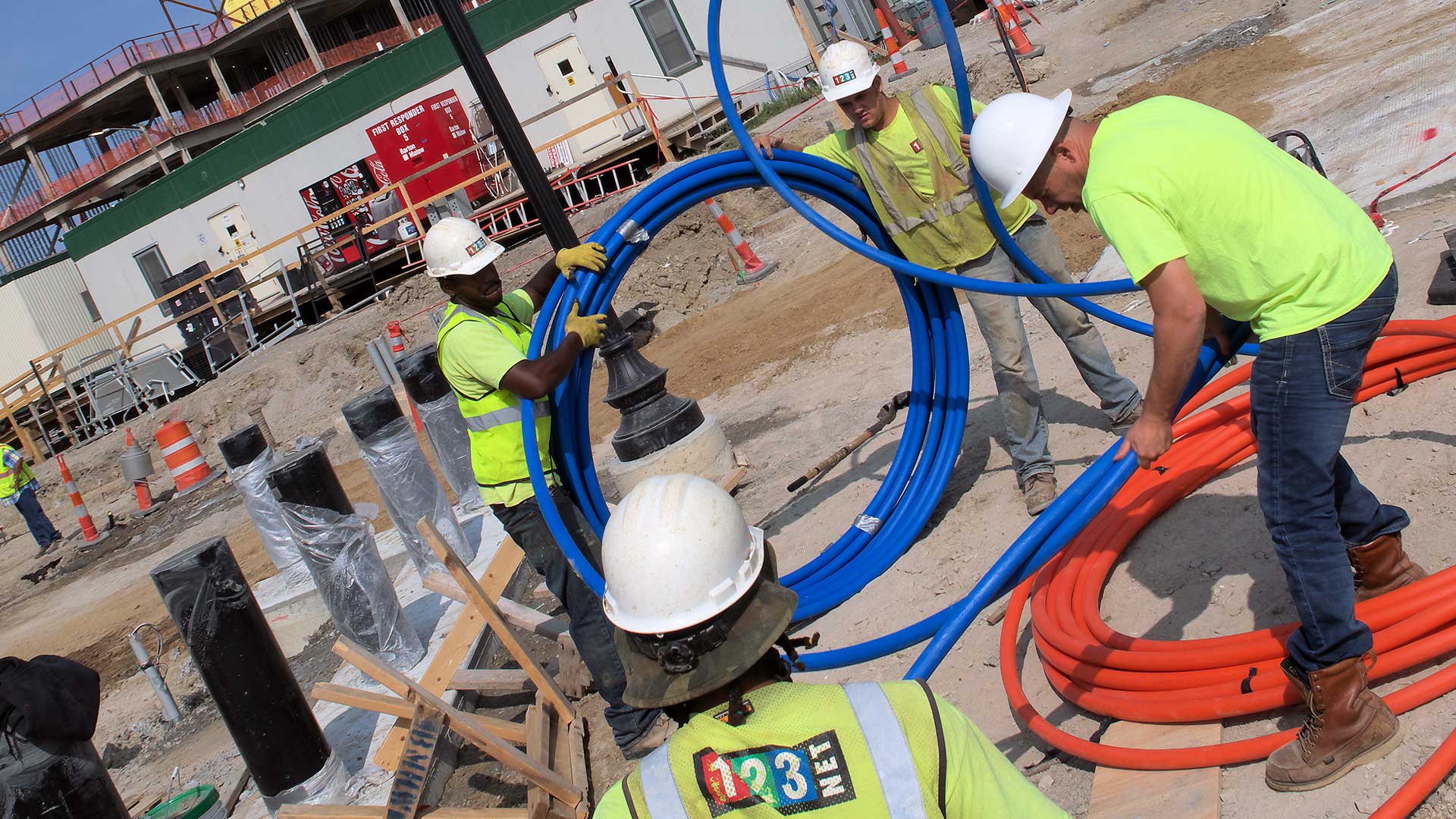
Introduction
In the digital era, the significance of internet towers, also known as cellular towers, cannot be overstated. These towering structures serve as the critical backbone of global connectivity, playing a pivotal role in bridging the gap between users across different continents and the boundless expanse of the internet. They enable a wide array of mobile communications, from the simplest forms of voice calls to the streaming of high-definition videos, thus facilitating an unprecedented level of connectivity and access to information.
As we delve deeper into the technological advancements brought forth by 4G and 5G networks, it becomes imperative to understand the foundational role and complex functionality of these cellular towers. They are not just passive structures dotting the landscape but are highly sophisticated components of the modern telecommunications infrastructure. Each tower hosts a multitude of antennas and transceivers necessary for transmitting and receiving data at incredibly high speeds, thereby supporting the ever-growing demand for faster and more reliable internet services.
The evolution of cellular technology, from the early days of 1G to the ultra-fast capabilities of 5G, highlights the dynamic nature of telecommunications and the continuous need for infrastructure that can support such rapid advancements. Cellular towers, with their ability to connect millions of devices simultaneously, are at the heart of this evolution, ensuring that individuals can remain interconnected regardless of their geographical locations. As such, appreciating the intricate workings and the critical importance of these towers is essential for anyone looking to grasp the complexities and the marvels of the digital age’s telecommunications landscape.
The Role of Internet Towers in Modern Communication
Internet towers, the towering sentinels of the digital landscape, play an indispensable role in the fabric of mobile communication. These structures are the critical junctures where wireless carriers and their myriad subscribers converge. This is facilitating a seamless flow of signals that underpin our connected world. Hosting an array of sophisticated equipment, these towers are the backbone of transmitting and receiving the vast streams of data that flow from countless mobile devices. Ensuring that network coverage extends over diverse geographies, from bustling urban centers to remote rural areas.
4G and 5G Networks
The evolution of mobile technology, particularly with the advent and expansion of 4G and 5G networks, has dramatically amplified the importance of these towers. They are no longer just pillars of basic communication. They are pivotal in providing the high-speed, reliable connectivity that modern users demand. This is especially critical as the world leans more into digital solutions for everyday tasks. From simple messaging and voice calls to streaming high-definition content and engaging in complex online activities.
Internet of Things
Moreover, the significance of internet towers transcends personal communication, playing a foundational role in the burgeoning Internet of Things (IoT) ecosystem. These towers enable a myriad of devices to connect, communicate, and share data in real-time. This is laying the groundwork for a future where smart technology applications become ubiquitous. From smart homes and cities to advanced manufacturing processes and healthcare systems, the IoT’s potential is vast and varied. Internet towers, by facilitating this interconnectedness, are unlocking new possibilities for efficiency, sustainability, and innovation across numerous sectors.
As carriers push the boundaries of what’s possible with 4G and 5G technology, the strategic importance of these towers only grows. They are the invisible threads weaving together the fabric of our digital society. This is supporting an ever-expanding network of devices and services that rely on instantaneous, reliable connectivity. In essence, internet towers are not just physical structures; they are the lifelines of the digital age. Enabling a world where everything and everyone can be connected, anytime and anywhere.
How Internet Towers Work
Foundation of Transmitters and Receivers
Internet towers, serve as the pivotal transmitters and receivers of the electromagnetic signals that are the lifeblood of mobile communication. Nestled within each tower are antennas and base stations, sophisticated components that meticulously handle the data transmitted by the devices in the hands and pockets of users worldwide. This intricate setup is not merely a feature of these structures but the very foundation upon which the functionality of cellular networks rests. It enables the myriad forms of communication that have become second nature to us. Such as making calls, sending messages, and accessing the boundless realms of the internet.
Higher Data Rates
The transition from 4G to the more advanced 5G technology has brought about a significant transformation in these towers. To accommodate the demands of this next-generation technology, towers have been outfitted with new equipment designed to support vastly higher data rates. This helps with significantly reduced latency. This upgrade is not just a step but a leap forward in technological innovation. Heralding a future where our interaction with the digital world is more seamless and efficient than ever before.
Digital Enhancements
This evolution promises to make internet towers even more integral to our digital lives. They are set to play a key role in enabling the ultra-fast, reliable connectivity that 5G promises. This is supporting everything from high-definition video streaming without buffering to real-time gaming with virtually no lag. Moreover, this technological advancement is poised to unlock new potentials in the Internet of Things (IoT), autonomous vehicles, and augmented and virtual reality (AR/VR). Among others, revolutionizing how we live, work, and play.
In essence, the importance of internet towers has never been more pronounced. They are the backbone of our connectivity, a critical infrastructure enabling the rapid exchange of data that powers our increasingly digital world. With each technological upgrade, these towers not only connect us to each other but also to the future of innovation and digital exploration.

The Impact of Internet Towers on Connectivity
Rural and Remote Areas
The widespread deployment of internet towers across the globe marks a significant milestone in the quest for universal connectivity. Particularly highlighting the strides made in extending network coverage to rural and remote areas. These structures stand as the vanguards of rural connectivity, playing a crucial role in narrowing the digital divide. By facilitating internet access in communities that were once isolated from the digital landscape, internet towers have become pivotal in integrating these areas into the global network. This is ensuring that the benefits of digital technology are accessible to all, regardless of geographical location.
Public Safety Networks
Beyond their role in providing widespread internet access, internet towers are instrumental in supporting public safety networks. They ensure that emergency services remain interconnected, enabling a swift and coordinated response in critical situations. This aspect of internet towers underscores their importance not just in enhancing daily communication but also in safeguarding communities. By ensuring that help is always within reach.
Underserved Areas
The deliberate expansion of tower infrastructure into less accessible regions reflects the commitment of tower companies to achieve universal connectivity. This expansion is not merely about more towers; it’s about consciously bridging gaps in coverage and making a tangible difference in underserved areas. Through these efforts, internet towers are helping to democratize access to information, education, and opportunities. This is driving social and economic development in even the most remote corners of the world.
As we continue to advance technologically, the role of internet towers in promoting inclusivity and connectivity cannot be overstated. They are more than just physical structures; they are beacons of progress, symbolizing a world where everyone. This is irrespective of their location, has the opportunity to connect, learn, and grow.
Challenges and Solutions in Internet Tower Infrastructure
The deployment of internet towers, while instrumental in advancing global connectivity, is not without its set of challenges. Among these, the environmental impact stands out, particularly when towers are erecting in ecologically sensitive zones. Raising concerns about their potential effects on local wildlife and the natural landscape. This helps prompting a reevaluation of how and where these structures are going. Additionally, the process of expanding network coverage are complicating by a labyrinth of regulatory hurdles. Navigating this complex regulatory environment can significantly delay the installation of new towers, impeding progress towards universal connectivity.
Environmental Impact
In response to these challenges, the telecommunications industry is pioneering innovative solutions. This is aiming at mitigating the environmental impact of internet towers. One such approach involves designing towers that blend more harmoniously with their surroundings, thereby reducing their visual and ecological footprint. Examples include constructing towers that mimic the appearance of trees or other natural features. This is allowing them to integrate more seamlessly into various landscapes.
Sustainable Practices
Furthermore, there is a growing emphasis on adopting sustainable infrastructure practices. This includes using materials and construction methods that are less disruptive to the environment. As well as implementing energy-efficient technologies to power the towers. Such initiatives represent a commitment to minimizing the environmental impact of expanding network infrastructure.
Regulatory Processes
Engagement with regulatory bodies is another crucial aspect of addressing the challenges facing internet tower deployment. Through ongoing dialogue and collaboration, the industry is working towards streamlining regulatory processes. This is aiming to expedite the expansion of coverage while ensuring compliance with environmental and safety standards.
These concerted efforts underscore the industry’s dedication to fostering a more connected world. This in a way that is both responsible and sustainable. By innovating and adapting, the path towards a more inclusive and environmentally conscious digital future is paving. This is demonstrating a commitment to overcoming obstacles for the greater good of global connectivity.

FAQs Section
- What is the range of an internet tower? A: The range of an internet tower varies depending on several factors, including the technology used (4G vs. 5G), terrain, and the presence of obstacles. Typically, a 4G tower can cover about 10 miles, while 5G towers have a shorter range due to higher frequencies.
- How do internet towers impact health? A: Studies have shown that, under normal operating conditions, the radiofrequency radiation from internet towers is well below the levels considered harmful by international guidelines.
- Can internet towers withstand extreme weather conditions? A: Yes, internet towers are designed to withstand extreme weather, including high winds, storms, and lightning, ensuring continuous connectivity even in adverse conditions.
This comprehensive guide to internet towers sheds light on their critical role in modern communication, the challenges they face, and the innovative solutions driving the industry forward. As we continue to rely more on digital connectivity, understanding and supporting the development of this infrastructure is crucial for a connected future.




